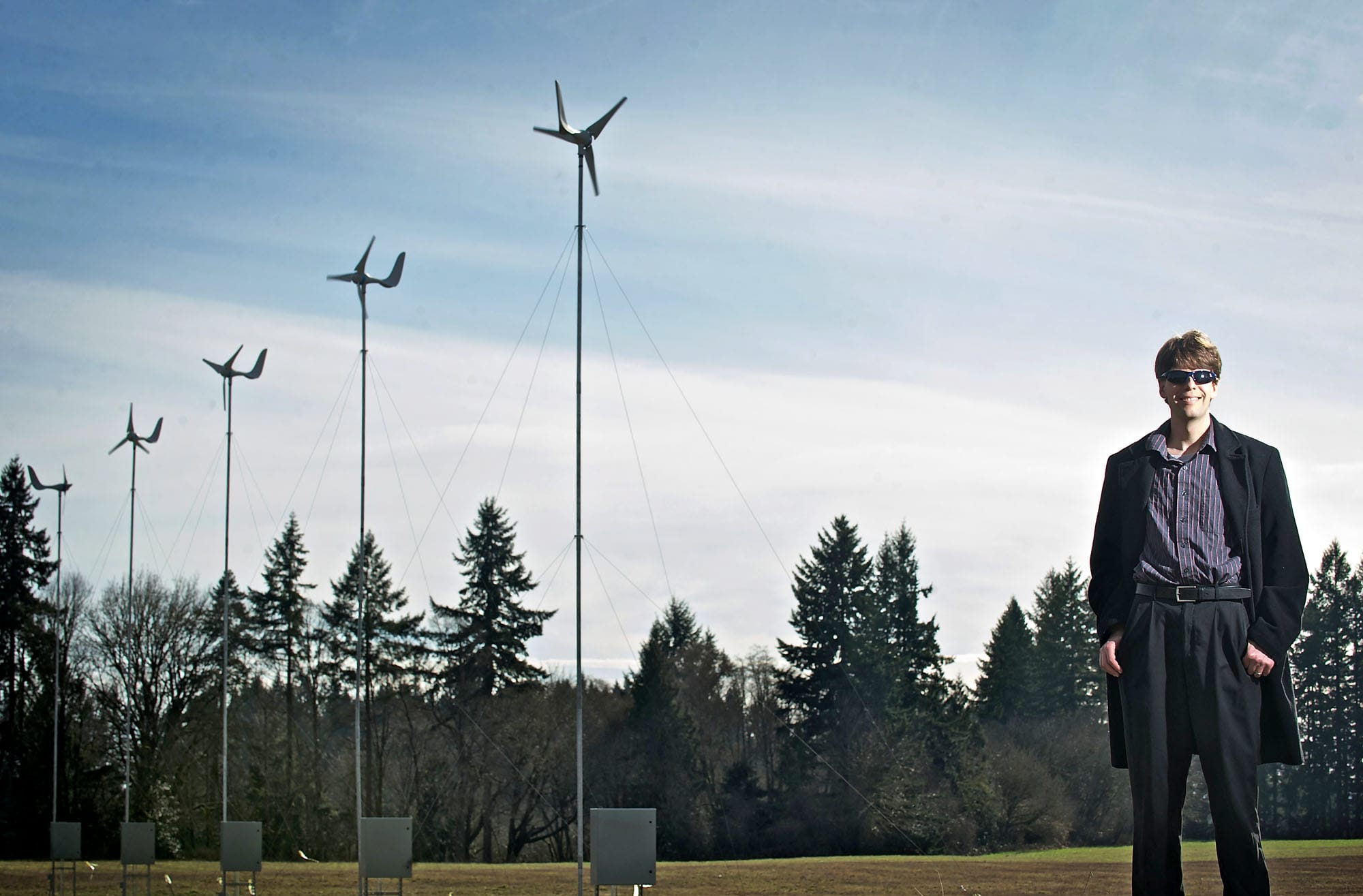Top hydroelectric power producers:
- Washington
- Oregon
Top wind power producers:
1. Texas
5. Oregon
8. Washington
Thirty feet above the ground, the blades of five wind turbines rotated Tuesday as a slight breeze wafted through a field on the eastern border of the Washington State University Vancouver campus.
The turbines constitute a new mini wind farm recently installed near the 50th Avenue campus entrance. They are a key component in the 2-year-old renewable energy track in the School of Engineering and Computer Science, a track not offered at any other WSU campus.
“Their purpose is not just to produce power, but it’s also to allow students to directly examine some real renewable energy technology,” said Stephen Solovitz, associate professor in WSU Vancouver’s mechanical engineering program.
The program’s series of classes for electrical engineering, mechanical engineering and computer science students focus on learning “how the technology is shaped and framed to get something that produces a lot of power,” Solovitz said.
Solovitz teaches the Fundamentals of Energy class and manages the campus wind farm. He’s joined by other instructors who are mechanical engineers and electrical engineers, and a department director who teaches automation and robotics.
Altogether, the five wind turbines have the capability of powering a house, Solovitz said. At only 10 meters off the ground, the wind turbines are small compared to the 50-meter-tall turbines in the Columbia River Gorge. The wind power almost doubles at the higher elevation, Solovitz said.
The program equips engineers and computer scientists with a depth of understanding of renewable energy. Graduates of the program have been hired by Bonneville Power Administration, Boeing, Hewlett-Packard and by local renewable energy technology companies.
“As developing nations increase their energy use, one of the biggest challenges is the need to produce more energy,” Solovitz said. “But also energy that has less global impact.”
The turbines aren’t wired into the campus electrical grid. However, they do generate a small amount of power for teaching purposes, Solovitz said. The primary purpose of the wind farm is to provide students a hands-on opportunity to design, build and test more efficient turbine blades, he said.
The renewable energy track has 36 students, but more students are on a waiting list. More than 100 students have participated in the program since its inception.
Graduate students are testing the wind turbines to ensure they work as expected.
This semester, juniors and seniors in the Solovitz’s class will design and test improvements for turbine performance. Their task is to design and build more efficient turbine blades than those installed by the manufacturer.
Design teams of five or six students in electrical engineering, mechanical engineering and computer science will design and fabricate more efficient six-inch blades for miniature turbines. The structure of the teams replicates design teams in the workplace. They will test the efficiency of the blades in the school’s wind tunnel.
After making improvements to their blade designs, each team will design and fabricate blades next spring that are two-feet long and install them on the wind farm’s turbines to test their efficiency.
“The goal is to design a turbine blade that’s as efficient as possible, but also to function at a wider range of speeds,” Solovitz said.
The small-scale wind farm was made possible by a $250,000 gift from the M.J. Murdock Charitable Trust, with matching state money.




